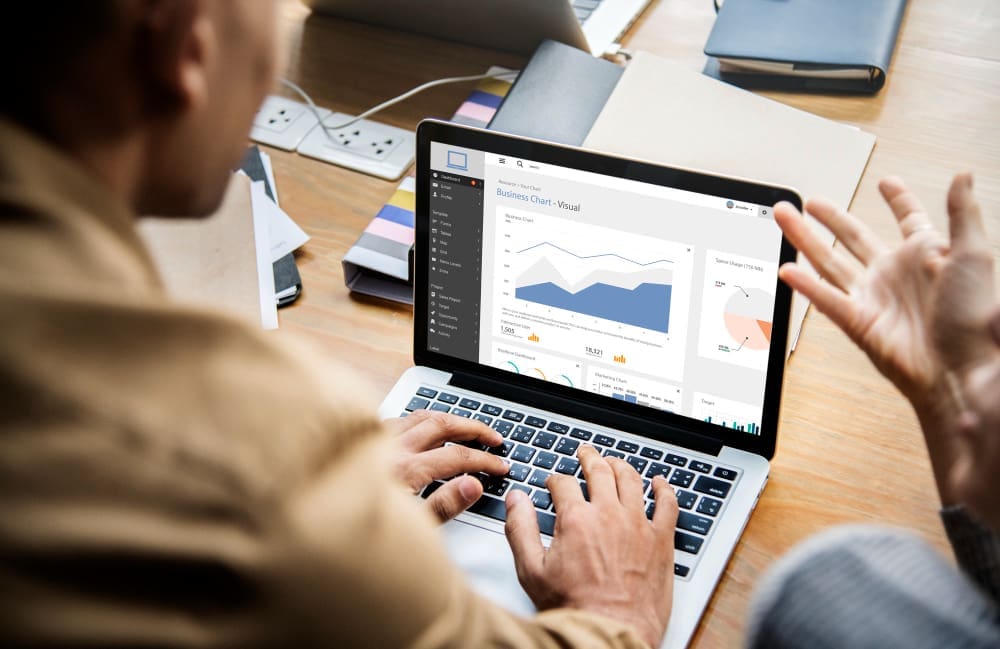In the fiercely competitive landscape of digital commerce, the product page serves as the ultimate sales floor, where browsers become buyers. For e-commerce businesses and marketers, optimizing these critical digital assets is a continuous process of refining everything from imagery and copy to calls-to-action and social proof. This strategic enhancement is essential for persuading visitors to complete a purchase, directly boosting conversion rates, increasing revenue, and transforming a standard online store into a powerful engine for business growth.
A well-optimized product page is more than just a digital catalog entry; it is a carefully constructed experience designed to answer customer questions, overcome objections, and build trust. It functions as your best salesperson, working 24/7 to close deals. Neglecting its performance is akin to leaving money on the table, as even small improvements can lead to significant gains in profitability and customer loyalty.
The Anatomy of a High-Converting Product Page
Before diving into specific optimization techniques, it’s crucial to understand the fundamental components that constitute a successful product page. These elements work in concert to guide the user from initial interest to final purchase. A breakdown reveals a consistent architecture across most successful e-commerce sites.
The core elements include compelling visuals (images and video), persuasive product descriptions, a clear and prominent call-to-action (CTA), social proof (reviews and ratings), transparent pricing and shipping information, and trust signals like security badges. Each component plays a distinct role, and the optimization process involves fine-tuning each one to maximize its effectiveness.
Mastering Product Visuals: More Than Just a Pretty Picture
In an online environment, customers cannot physically touch or inspect a product. Visuals must bridge this sensory gap, providing as much information and confidence as an in-person experience. High-quality, professional visuals are non-negotiable; they are the first and most impactful impression you make.
High-Quality Imagery
Your product photography must be sharp, well-lit, and consistent. Offer multiple images showcasing the product from various angles. Include close-up shots to highlight details, texture, and quality craftsmanship. Contextual or lifestyle photos, which show the product in use, are equally important as they help customers visualize how it will fit into their own lives.
For example, a clothing retailer should show a sweater on a mannequin for a clean view, but also on a model in a real-world setting to demonstrate fit, drape, and style. This combination of clinical and contextual imagery answers key questions and creates an emotional connection.
The Power of Product Videos
Video has emerged as a conversion powerhouse. A short product video can demonstrate features and benefits far more effectively than static images or text. Consider creating product demos, unboxing videos, or tutorials that show the item in action.
These videos not only provide valuable information but also increase the time visitors spend on the page, a positive signal to search engines. They build confidence by proving the product works as advertised and can significantly reduce pre-purchase uncertainty.
Embracing 360-Degree Views and AR
For an even more immersive experience, technologies like 360-degree photo viewers and Augmented Reality (AR) are becoming game-changers. A 360-degree view allows users to digitally “spin” the product, examining it from every angle. AR takes this a step further, enabling customers to use their smartphone camera to visualize a product, like a piece of furniture, in their own home.
While more resource-intensive to implement, these technologies offer a powerful competitive advantage, drastically improving buyer confidence and reducing the likelihood of returns.
Compelling Copywriting That Sells
Once your visuals have captured a visitor’s attention, your copy must do the heavy lifting of persuasion. Product page copy should be clear, concise, and focused on the customer’s needs and desires. It’s not just about listing features; it’s about translating those features into tangible benefits.
Crafting a Killer Headline and Product Description
The product headline should be descriptive and benefit-driven. Instead of just “Waterproof Jacket,” try “The All-Weather Explorer Jacket: Stay Dry in Any Downpour.” The product description should expand on this promise, telling a story about how the product solves a problem or enhances the customer’s life.
Use evocative language that appeals to the senses and emotions. Focus on the “why” behind the product. Why should the customer care? What transformation will the product bring? This approach connects with the customer on a deeper level than a simple list of technical specifications.
Using Bullet Points for Scannability
While a narrative description is great for engagement, many shoppers are skimmers. They want to quickly identify the key features and benefits. Use a concise, bulleted list to highlight the most important selling points, such as materials, dimensions, key features, and warranty information.
This scannable format allows busy shoppers to absorb critical information at a glance, making their decision-making process faster and easier. It complements the more detailed description, catering to different reading styles.
The Call-to-Action (CTA): The Engine of Conversion
The call-to-action button is arguably the single most important element on the page. Its entire purpose is to prompt the user to take the next step. If your CTA is weak, confusing, or hard to find, your conversion rates will suffer, regardless of how great your product is.
Design and Placement
Your CTA button must stand out visually from the rest of the page. Use a contrasting color that draws the eye. The size should be large enough to be easily clickable on both desktop and mobile devices without being obnoxious. Crucially, it should be placed “above the fold”—visible without the user having to scroll down.
Action-Oriented Language
The text on the button should be a clear, direct command. “Add to Cart” is the standard and most recognized CTA, but testing alternatives can yield positive results. Phrases like “Buy Now,” “Get Yours Today,” or “Add to Bag” can create a different sense of urgency or brand feel. The key is to be unambiguous about what happens when the button is clicked.
Building Trust and Credibility: The Role of Social Proof
First-time visitors to your site are often skeptical. They need reassurance that your product is legitimate and that your company is trustworthy. Social proof is the psychological phenomenon where people conform to the actions of others under the assumption that those actions are reflective of the correct behavior. In e-commerce, it’s a powerful tool for building trust.
Leveraging Customer Reviews and Ratings
Displaying customer reviews and star ratings directly on the product page is essential. Shoppers overwhelmingly rely on the experiences of previous buyers to inform their decisions. Encourage customers to leave reviews post-purchase and feature a mix of positive and constructive feedback—a page with only perfect five-star reviews can sometimes appear inauthentic.
Include a feature that allows users to filter or sort reviews, and consider adding a Q&A section where potential customers can ask questions that are answered by staff or previous buyers.
Showcasing Testimonials and User-Generated Content
Go beyond simple star ratings by featuring detailed testimonials or user-generated content (UGC). A glowing paragraph from a happy customer, especially one accompanied by a photo, can be incredibly persuasive. Encourage customers to share photos of themselves using your product on social media with a specific hashtag, and then showcase those images on your product page (with permission).
Trust Badges and Security Seals
Alleviate security concerns by displaying trust badges prominently. These are logos from well-known security companies (like Norton or McAfee) or payment processors (like Visa, Mastercard, PayPal). These small visual cues reassure customers that their personal and financial information will be safe during the checkout process.
Streamlining the User Experience (UX) for Seamless Shopping
A clunky, slow, or confusing user experience will send potential customers fleeing to your competitors. A smooth, intuitive, and fast page is fundamental to high conversion rates.
Mobile-First Design is Non-Negotiable
With a majority of e-commerce traffic now coming from mobile devices, a mobile-first design is no longer optional. Your product page must be fully responsive, meaning it looks and functions perfectly on any screen size. Buttons must be easily tappable, text must be readable without pinching to zoom, and images must load quickly on mobile networks.
Page Load Speed: Every Millisecond Counts
Page load speed is a critical conversion factor. Studies have consistently shown that even a one-second delay in page load time can result in a significant drop in conversions. Optimize your images by compressing them without sacrificing quality, leverage browser caching, and minimize the use of heavy scripts to ensure your pages load almost instantly.
Clear Pricing and Shipping Information
Unexpected costs are the number one reason for shopping cart abandonment. Be completely transparent about pricing and shipping information directly on the product page. If you offer free shipping, display it prominently. If shipping costs vary, provide a simple tool for customers to estimate the cost before they add the item to their cart.
Advanced Optimization: A/B Testing and Analytics
Product page optimization is not a “set it and forget it” task. It is a process of continuous, data-driven improvement. A/B testing, also known as split testing, is the practice of creating two versions of a page (an ‘A’ and a ‘B’ version) with one element changed, and showing them to different segments of your audience to see which one performs better.
You can test nearly anything: the color of your CTA button, the wording of your headline, the placement of customer reviews, or the type of images you use. By systematically testing one variable at a time and analyzing the results, you can make incremental changes that compound into major conversion gains over time. Track key metrics like conversion rate, add-to-cart rate, bounce rate, and average time on page to measure the impact of your changes.
Conclusion
Optimizing your product pages is one of the highest-impact activities you can undertake to grow your e-commerce business. It boils down to a holistic approach that masters five key pillars: compelling visuals, persuasive copy, a clear call-to-action, trust-building social proof, and a seamless user experience. By focusing on these areas and committing to a continuous cycle of testing and refinement, you can transform your product pages from simple listings into powerful conversion machines that drive revenue and build a loyal customer base.








